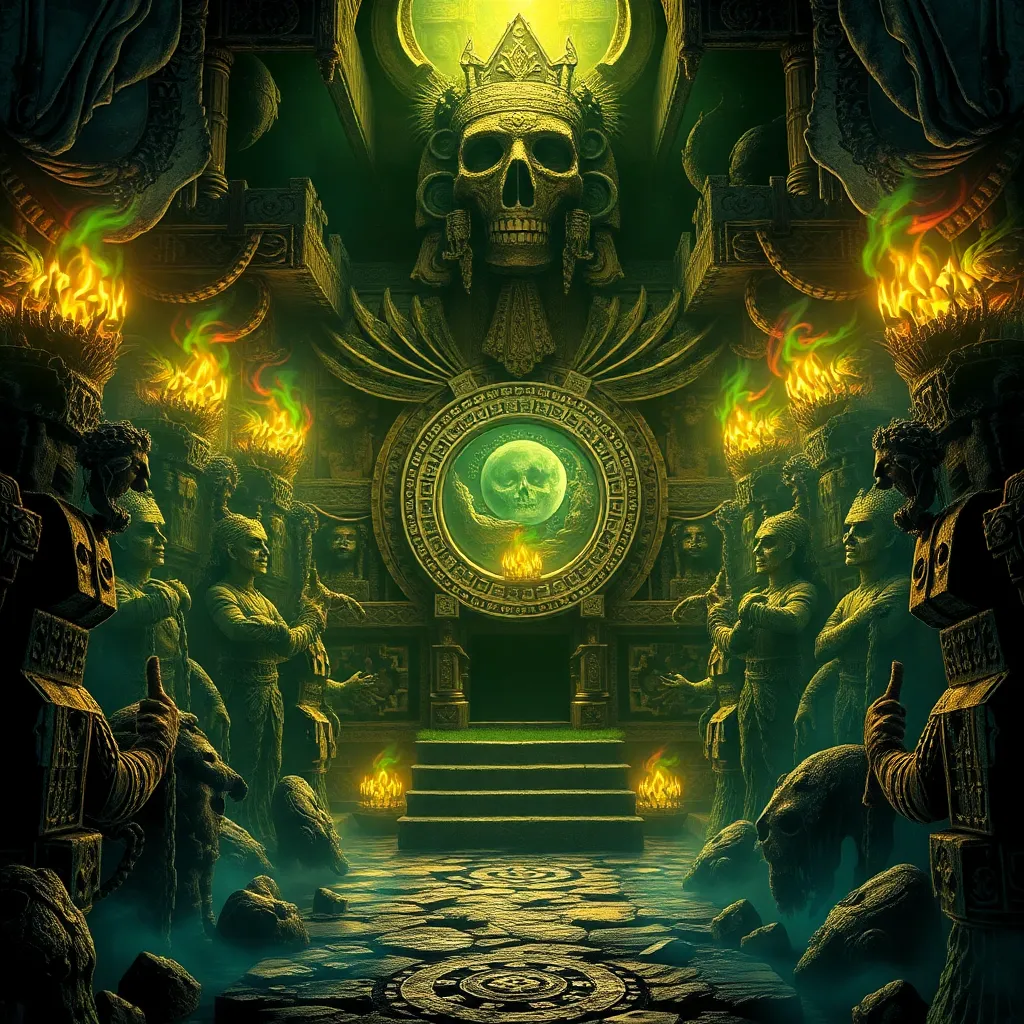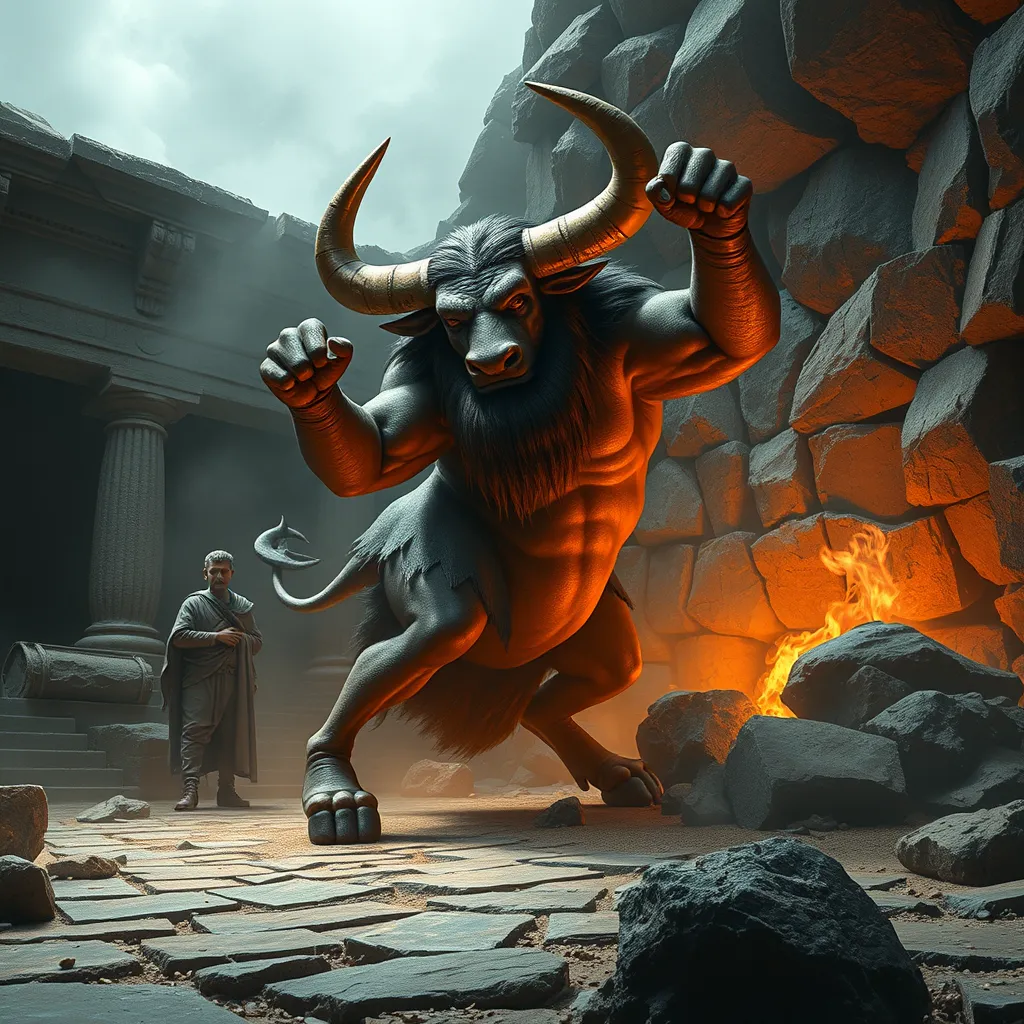The Ghosts of the Mayan Underworld: Xibalba and the Afterlife
I. Introduction: Unveiling Xibalba
Mayan mythology is a rich tapestry of gods, creation stories, and complex beliefs regarding life and death. At the heart of this mythology lies Xibalba, the underworld, which serves as a significant focal point in the Mayan understanding of the afterlife. This article aims to delve into the intricate world of Xibalba, exploring its importance in Mayan culture, its mythological landscape, and its lasting impact on modern spiritual practices.
II. The Mythological Landscape of Xibalba
Xibalba is often described as a dark and foreboding place, characterized by its various realms that souls must navigate after death. The name translates to “place of fright” in the K’iche’ language, indicating the challenges that await the deceased.
- Description of Xibalba and its realms: Xibalba is often depicted as a labyrinthine underworld with numerous levels, each filled with trials and dangers that souls must overcome.
- Key deities associated with Xibalba: Prominent figures such as the Lords of Xibalba—Hun Came and Vucub Came—are central to the mythology, representing death and the afterlife.
- Symbolism and representation in Mayan art and literature: Xibalba is frequently illustrated in murals and codices, symbolizing the duality of life and death.
III. The Journey to Xibalba: Myths and Legends
The journey to Xibalba is immortalized in the tale of the Hero Twins, Hunahpu and Xbalanque. Their story encapsulates the trials faced by souls in the afterlife.
- The story of the Hero Twins: The twins venture into Xibalba to confront the Lords of the underworld, showcasing courage and intelligence.
- Trials and tribulations faced in Xibalba: They endure various tests, including the infamous game of ball, which serves as a metaphor for life’s struggles.
- Lessons and moral implications of the myths: The twins’ triumph over adversity teaches resilience, cleverness, and the importance of unity.
IV. The Concept of the Afterlife in Mayan Beliefs
The Mayan view of the afterlife is distinct from other cultures, heavily influenced by their beliefs about Xibalba.
- Differences between Xibalba and other afterlife beliefs: Unlike many Western beliefs that emphasize eternal reward or punishment, Xibalba is seen as a realm of trials rather than a place of eternal damnation.
- The role of ancestors and spirits in Mayan culture: Ancestors are revered, and their spirits are believed to influence the living, creating a bond between the two worlds.
- Rituals and practices surrounding death and burial: Elaborate funerary rites reflect the significance of the afterlife, with offerings made to guide souls safely to Xibalba.
V. The Influence of Xibalba on Mayan Society
Xibalba’s presence permeates various aspects of Mayan society, shaping their social norms and practices.
- Xibalba’s impact on social norms and practices: Fear of the underworld’s trials influenced moral behavior and community dynamics.
- Integration of Xibalba into daily life and rituals: Daily practices often included invoking the ancestors and seeking protection from the Lords of Xibalba.
- The relationship between the living and the dead: The living maintained a respectful relationship with the deceased, believing that proper homage could avert misfortune.
VI. Archaeological Discoveries and Insights
Archaeological excavations have provided significant insights into the Mayan understanding of Xibalba.
- Significant archaeological sites related to Xibalba: Sites such as Copán and Tikal have revealed artifacts linked to death rituals and beliefs about the underworld.
- Artifacts and their interpretations: Items like pottery and murals depict scenes from Xibalba, illustrating the myths surrounding the afterlife.
- How archaeology has reshaped our understanding of Xibalba: Discoveries have illuminated the complexity of Mayan spirituality and the centrality of Xibalba in their worldview.
VII. Modern Interpretations and Cultural Legacy
The legacy of Xibalba continues to resonate in contemporary culture and spirituality.
- Xibalba in contemporary literature and media: Modern novels, films, and art often draw inspiration from the rich mythology of Xibalba, reinterpreting its themes for new audiences.
- The resurgence of interest in Mayan mythology: There has been a growing fascination with ancient Mayan culture, leading to increased scholarly research and public interest.
- Xibalba’s influence on modern spiritual practices: Some spiritual movements incorporate elements of Mayan beliefs, seeking guidance from the spirits of the ancestors.
VIII. Conclusion: The Enduring Legacy of Xibalba
In summary, Xibalba represents a profound aspect of Mayan mythology, illustrating their beliefs about life, death, and the afterlife. It influences various facets of Mayan culture, from social norms to spiritual practices. Today, Xibalba continues to capture the imagination of many, underscoring its relevance in modern discussions of spirituality and cultural heritage.
The ghosts of the Mayan underworld remain a testament to the enduring legacy of Xibalba, reminding us of the intricate connections between the living and the dead and the universal quest for understanding the mysteries of existence.



